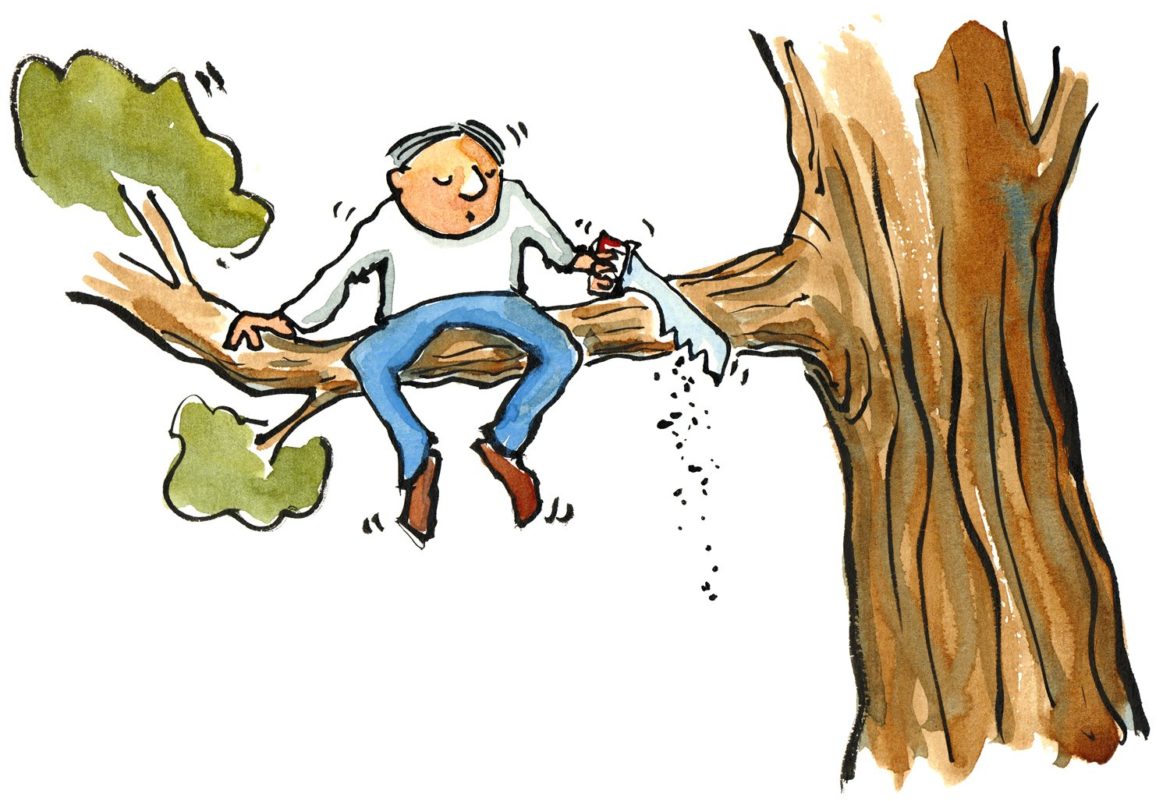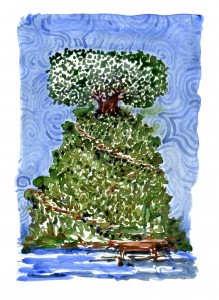Image Source: Frits Ahlefeldt
“I love nature very much and if you know how much I love it, come to my home and I can show you 142 types of cacti which I have been growing in my backyard,” says one industrialist cum nature lover. “My whole family loves ecology and wildlife. We have a number of animals on our farm and we all love them”, says another man who is a big social worker cum industrialist.
Some people thus try to prove their love for nature, ecology, wildlife, etc. when you question their actions that are quite damaging to the environment just beyond their farmhouses and backyards. You go to these people with all the sorrow and anger and you see these people proclaiming how much concern they have for trees and animals. But you can actually see that their love is not genuine. They try to somehow evade the issue and pacify us. In order to kill time, they talk about the technicalities of lawmaking, the difference between micro and macro environments.
Writing the details about the incident which led to some of us meeting these people will take a lot of time and space. Anyway these details and these people are not important here. What is more important is to look at the attitudes these people have. When we look at ourselves deeply, we realise we also have these attitudes these people have. We throw our garbage into the streets and keep our houses clean. This way we prove how much love we have for cleanliness. If someone questions still, we can hide behind things like micro-environment and macro-environment. Unfortunately this sort of behavior has caused a lot of damage to the environment around us. We have become highly insensitive to this damage. The dying Powai Lake on one side and the degraded hills on the other side of our campus tell everything about us: our intelligence, our sensitivity, our attitudes.
I request the reader to forgive me for the digression. We have been ceremoniously doing things like removing water hyacinth from the lake and planting trees on hills. But things remain the same and usually get worse. We (students, faculty and staff) need to understand the causes behind it and find out whether we are really interested in protecting the things around us.
One day we came to hear from a very big person the need to have a Vanamahotsav on our campus. He said, “We will have a Vanamahotsav on our campus.’’ This statement was immediately followed by something like “we will have a rose bed here and a rose bed there”. This is the sort of loose thinking we have and it gets reflected in our inconsistent actions which ultimately end up in things like the present state of the Powai lake. Now it is very important to realise whether we are really interested in improving the things around us. After the positive or negative answer, we had better stop talking hypocritically.
Talking about nature, ecology, environmental problems, and criticising people and incidents is very easy and sometimes very entertaining. But there is another thing which is easier and extremely enjoyable. That is planting a tree and taking care of it. One learns a lot of things in life from a tree. Every new bud, every new leaf, and every new branch tells you something. You realise your place in this world and your role in taking care of your place.
For eight months in a year, our hills are ugly. Only during the monsoon is the hill green. In October the green grass starts dying. In November, it is fully dry. In December, one day the hill suddenly turns black. Everything on the hill is burnt out. Then the black hills slowly fade and keep waiting till mid June for the monsoon. With the monsoon they suddenly turn green and remain so for another four months.
Over the years we have allowed heavy deforestation to take place on the hills and now they are completely barren. Now only grass grows there during the monsoon. Looking at these degraded hills, some of us felt that we should do something. We didn’t plan anything in the beginning, but with enthusiastic participation of like minded people, we have planted 200 saplings on the Vihar hill.
There were many problems that we had to encounter. When there were too many cattle grazing on the hill, we made friends with the grazers and they prevented the cattle from trampling our saplings. Then the grass around grew taller than the saplings. So we had to remove the grass around them. At the end of the monsoon, we realised the fire problem. So we became grass cutters and removed all the grass in the entire area where we had planted the saplings. After doing all these things, the plants were asking for water. Then we started watering the plants – filling jerry cans with water from the lake, carrying it to the top of the hill, and watering the plants. With regular watering the plants were growing healthily and vigorously. Everything was peaceful till the first week of December. Suddenly on a Sunday morning, fire engulfed the hill. Our saplings were not burnt (because we had cleared the dry grass around them) but the intense heat from the surroundings damaged them heavily. It was a very sad scene. But we didn’t lose our spirits. The watering continued and the plants started growing again.
We shall be watering these plants till next monsoon. Next monsoon we plan to plant about 800 saplings which are growing in our nursery. What we could do this year was very little. At present about 85 saplings are growing on a small patch of land on top of the Vihar hill. But this first experience has taught us lot. Now a lot of people are taking care of the plants.
There is not any dearth of people’s participation. Basically, most of us have an inherent love for trees. But for protecting the hills from degradation, the Institute has to take serious responsibility. It has to take conscious and consistent efforts in afforesting the hills. We are very fortunate to have these hills on our campus and we are responsible for the terrible degradation that has taken place. The same applies to the Powai lake as well.
Talking about Vanamahotsavs is not of any use unless we are able to properly understand the present state of affairs. Last month, a friend and I attended a lecture given by a great professor on environment. Impressed by his sensitivity for the environment, we went to him and started talking about our environmental problems in general. After some time, we were talking about our own environment. Suddenly the host professor came and started listening to us. But we could see his irritation. He felt that we were discussing silly things. He said, “Sir, in India, all sorts of people come and talk about all sorts of problems. Actually whereever you go, you will find only problems. Now, why don’t you please talk to an environment modeling expert whom I have brought with me. It may be better that we concentrate on modeling.” Talking about our Powai lake and our campus hills is talking about “all sorts of problems” for one of our own faculty. He went on explaining the importance of modeling. It was terribly shocking. There was a feeling of hopelessness.
But the plants are growing well on the hill with all the difficulties such as fires, the scorching heat and the barren surroundings. Should we give up hope?


